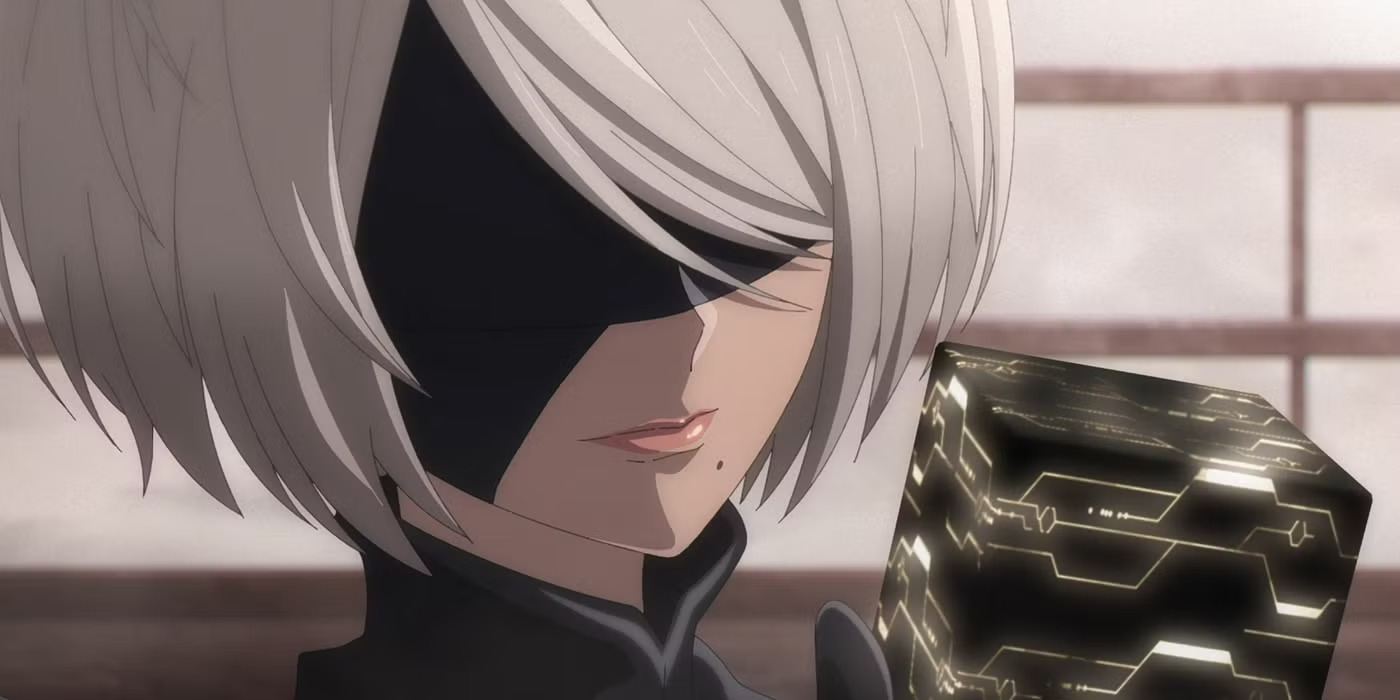“Everything that lives is designed to end.” This haunting line from NieR: Automata’s prologue sets the tone for the entire game. Spoken by 2B, it highlights the cycle of life and death, making players ponder whether this endless repetition is a curse, a punishment, or part of some cosmic puzzle. The quote’s repetition early in the game reinforces the inevitability of death and the philosophical depth underlying the narrative.
Routes and Endings Reveal Androids’ Struggles, Sacrifice, and Life-Death Cycle Meaning
Route A introduces the player to a traditional video game experience. You complete missions, defeat enemies, and confront the powerful machines Adam and Eve. By the end, 9S becomes infected with a virus, leading 2B to kill him, highlighting the game’s theme of mortality and sacrifice. This route sets up the story but leaves many questions unanswered.
Route B revisits familiar missions but adds the dimension of hacking into enemies to uncover their thoughts. Here, players discover that machines are sentient beings with tragic stories, challenging the idea of good and evil. Additionally, the revelation that humans are long extinct forces androids to confront the lies they’ve lived under, adding layers of complexity to the narrative.
Route C escalates the stakes, as players face the destruction of the YoRHa Bunker and the infection of 2B. With the surviving androids reduced to 9S and A2, the game explores themes of despair and nihilism. Players witness 9S’s descent into a destructive mindset, reflecting how loss and hopelessness can erode purpose. Endings C and D offer alternate resolutions depending on player choice, but both reinforce the game’s darker philosophical undertones.
Ending E becomes available after completing all previous routes. In this finale, only the sentient Pods survive, preserving the memories of 2B, 9S, and A2. Players must sacrifice their saved data to help others complete the game, symbolizing selflessness and the continuation of life and memory. Ending E is widely considered the game’s true conclusion, emphasizing the cycle of life and death introduced in the opening quote.

Nihilism and Absurdism Revealed Through Androids’ Struggles in a Meaningless Universe
NieR: Automata explores nihilism through its bleak world, showing characters grappling with a universe devoid of gods, purpose, or truth. Characters like Eve and 9S spiral into destructive behavior when stripped of meaning. The game portrays the emptiness of existence and questions the validity of conventional beliefs and purposes, reflecting classic nihilist philosophy.
Despite its nihilistic undertones, the game leans toward absurdism. Absurdist philosophy encourages embracing life’s inherent contradictions and finding personal meaning despite a meaningless universe. Characters like 2B, 9S, and A2 demonstrate this by continuing to act with purpose, whether through love, duty, or rebellion, showing that life can still have value even when stripped of absolute meaning.
NieR: Automata’s post-game credits sequence reinforces the absurdist message. The seemingly impossible level challenges players repeatedly, asking them if life is meaningless or if they will give up. Help from other players eventually makes it manageable, teaching that connection, perseverance, and cooperation can create meaning even in an absurd world.
The game’s insistence on erasing saved data to help other players encapsulates its core philosophy. Sacrifice becomes a mechanism for communal progress, demonstrating that meaning can emerge from helping others. This act transforms the player’s journey into a shared experience, reinforcing the interconnectedness of struggle and purpose within an absurd universe.
NieR: Automata is more than a story about androids fighting machines; it’s an exploration of life, death, nihilism, and absurdism. Through multiple endings, player choices, and philosophical undertones, it challenges players to confront despair, create meaning, and embrace the absurd. The game ultimately leaves players with a sense of hope, illustrating that even in a cycle of destruction, persistence and human connection matter.



